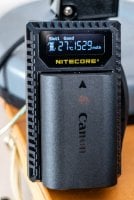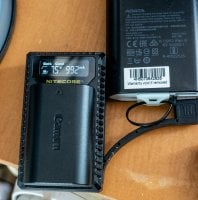Going hiking and looking for some extra batteries. Anyone used Wasabi batteries in their R? How about the Wasabi dual charger that runs off a USB charger or power pack?
I've always used genuine Canon batteries, but these are under half price and rated at a greater capacity and the charger looks useful.
This 2017 thread had positive comments about Wasabi in other Canon cameras:
 www.canonrumors.com
www.canonrumors.com
Thanks
I've always used genuine Canon batteries, but these are under half price and rated at a greater capacity and the charger looks useful.
This 2017 thread had positive comments about Wasabi in other Canon cameras:
Do You Use Third Party Batteries in Your Canon Cameras?
Out of personal curiosity, I asked on last night on Twitter if you folks used third party batteries in your Canon cameras. The results so far actually shock me, it’s quite close to a 50/50 split.Do you use third party batteries in your Canon cameras?— Canon Rumors (@canonrumorsguy)...
Thanks


